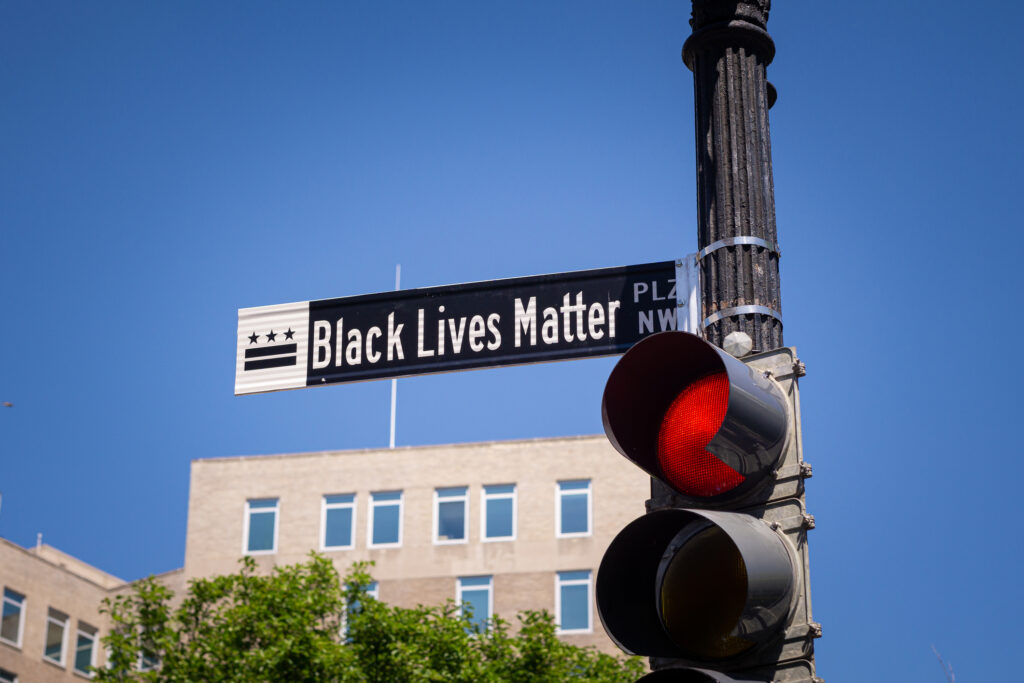Washington, D.C. The plaza, a two-block stretch of 16th Street NW, was established in June 2020 by Mayor Bowser during nationwide protests following the murder of George Floyd by a Minneapolis police officer. The mural and its accompanying street sign were a direct rebuke to Trump’s first administration, painted days after federal forces cleared peaceful protesters from nearby Lafayette Square with tear gas and smoke grenades to allow the then-president to pose for photos outside St. John’s Church. For over four years, the site served as a gathering place for demonstrations, memorials, and celebrations of the Black Lives Matter movement.
However, Trump’s return to the White House in January 2025 shifted the political landscape. On March 4, Rep. Andrew Clyde (R-Ga.) introduced H.R. 1774, a bill threatening to withhold $1.5 billion in federal funding—vital for D.C.’s 2025 budget—unless the city removed the mural and renamed the plaza “Liberty Plaza.”
Trump, who has long criticized the plaza and called Bowser “incompetent” during his first term, amplified the push, reportedly urging the mayor to “clean up” the capital as part of his vision to “Make D.C. Great Again.” Posts on X from conservative figures, including Fox News correspondent Griff Jenkins, celebrated the dismantling as a step toward that goal.
Facing economic challenges, including projected revenue losses from federal job cuts under Trump’s administration, Bowser announced last week that the plaza would be “evolved” into part of a citywide mural project tied to America’s 250th birthday in 2026.
“The mural inspired millions and helped our city through a painful period, but now we can’t afford to be distracted by meaningless congressional interference,” Bowser said in a statement on X. She emphasized the need to focus on mitigating the impact of federal layoffs, estimated to cost D.C. $1 billion over the next three years.
Crews began jackhammering the pavement on Monday, a process expected to take six to eight weeks, replacing the mural with unspecified city-sponsored artwork. The decision has drawn sharp reactions. Supporters of the plaza, including activists and residents like Starlette Thomas of Bowie, Maryland, mourned its loss.
“To watch it be undone in this way was very hurtful,” Thomas told the Associated Press, clutching a piece of the broken pavement. “It’s more than brick and mortar.”
The Black Lives Matter Global Network Foundation condemned the removal, framing it as part of a broader assault on racial justice initiatives.

Meanwhile, conservative voices cheered the move. Charlie Kirk, a prominent right-wing commentator, visited the site and hailed it as “the end of this mass race hysteria in our country,” according to posts on X. Trump himself shared a video of the demolition on Truth Social, signaling his approval.
Critics argue the removal underscores D.C.’s vulnerability as a city without full autonomy, subject to Congressional oversight and now facing a Republican-controlled government aligned with Trump’s agenda. The president has revived campaign promises of a federal “takeover” of Washington, citing crime and homelessness as justification, though no concrete executive order has been confirmed.
Bowser, who met with Trump at Mar-a-Lago post-election to ease tensions, has adopted a conciliatory tone, avoiding direct confrontation. Her shift from defiance in 2020—when she clashed openly with Trump—to pragmatism in 2025 reflects the delicate balance she must strike to protect D.C.’s interests amid looming budget threats and federal encroachment.

